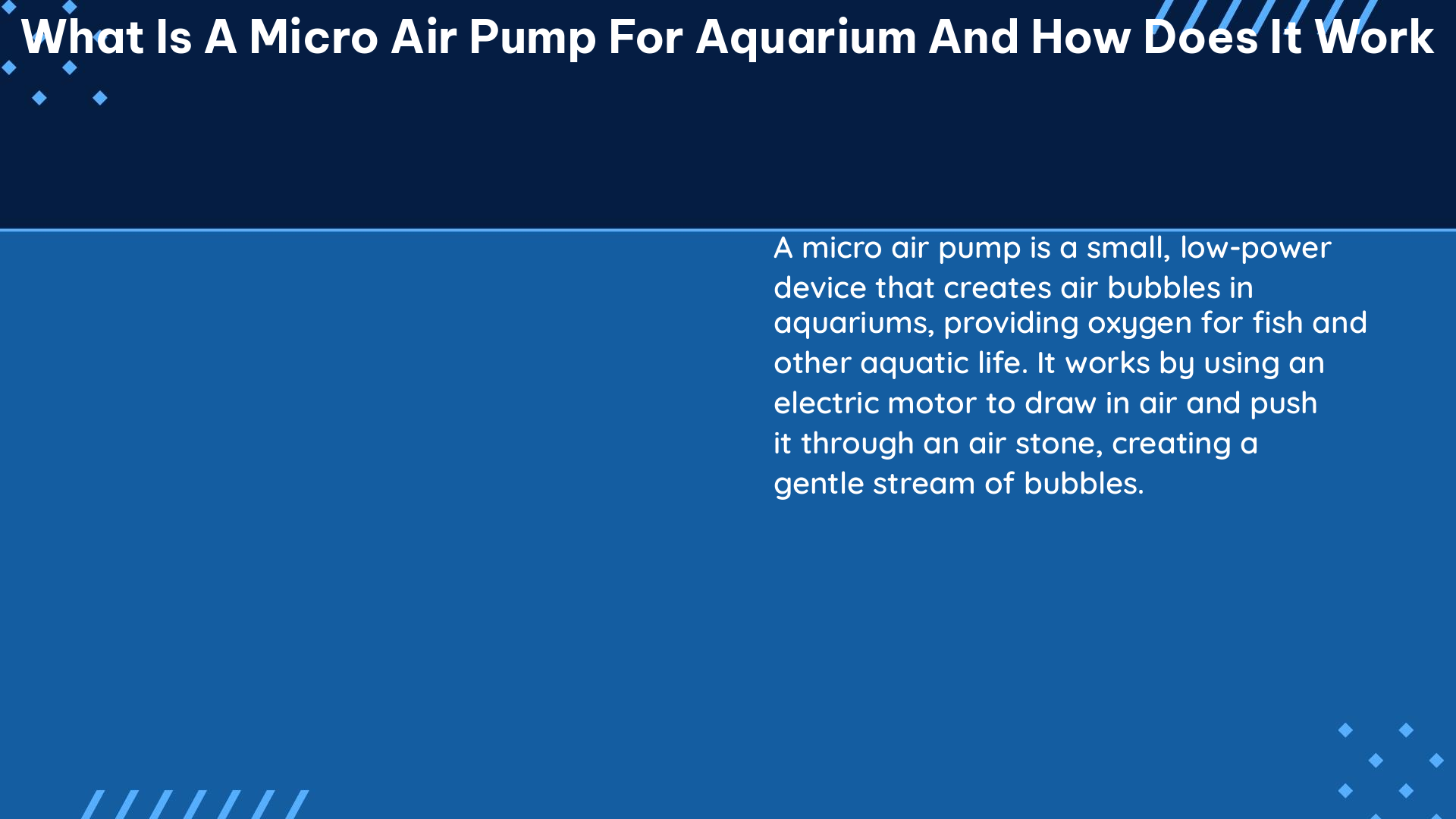A micro air pump is a crucial component in maintaining a healthy and thriving aquarium ecosystem. These compact devices are designed to pump air into the water, increasing surface agitation and oxygen levels, which are essential for the well-being of aquatic life. In this comprehensive guide, we will delve into the intricacies of micro air pumps, exploring their technical specifications, measuring methods, and the importance of understanding their performance characteristics.
Understanding the Technical Specifications of Micro Air Pumps
Micro air pumps for aquariums are engineered to deliver precise and efficient air delivery, catering to the specific needs of various aquarium setups. Let’s explore the key technical specifications you should be aware of:
Flow Rate
The flow rate of a micro air pump is typically measured in liters per minute (LPM) and is a crucial factor in determining the pump’s performance. A common specification for a micro air pump is a flow rate of 4 LPM at 0.016 MPa (mega-pascals) of pressure. This means that the pump can deliver 4 liters of air per minute when operating at a pressure of 0.016 MPa.
Depth-Dependent Flow Rate
The depth of the air exit point in the aquarium can significantly impact the flow rate of a micro air pump. For instance, a pump rated for 4 LPM at 0.016 MPa may have a flow rate of 2 LPM when the air is being discharged at a depth of 80 cm, and the flow may cease altogether at a depth of 161 cm. Understanding this depth-dependent flow rate is essential when positioning the air diffuser or stone in your aquarium.
Noise Level
The noise level of a micro air pump is an important consideration, as it can affect the overall ambiance and tranquility of your aquarium setup. Manufacturers typically provide the decibel (dB) rating of their pumps, allowing you to select a model that meets your noise preferences.
Power Source
Micro air pumps for aquariums require a power source to operate. They are typically designed to be plugged into a standard electrical outlet, ensuring a reliable and consistent power supply for your aquarium’s aeration needs.
Connection
Micro air pumps connect to the aquarium’s water using airline tubing, which allows the air to be efficiently delivered to the desired location within the tank.
Measuring the Performance of Micro Air Pumps

Accurately measuring the performance of a micro air pump is essential for ensuring optimal aeration in your aquarium. Here are three methods you can use to measure the airflow of your micro air pump:
Displacement Method
The displacement method is a simple and straightforward way to measure the airflow of a micro air pump. Place the pump in a tank of water and use a measuring cup to collect the bubbles over a known period of time. Divide the volume of the collected bubbles by the time to calculate the flow rate in liters per minute (LPM).
Venturi with Differential Pressure Sensor
For a more engineered approach, you can use a venturi with a differential pressure sensor to measure the airflow. Place a venturi in the discharge hose and connect a differential pressure sensor to measure the pressure difference. Using the orifice size and the pressure differential, you can then calculate the flow rate.
Pitot Tube with Manometer
Another method involves using a pitot tube with a manometer. Place the pitot tube in the discharge hose and connect a manometer to measure the pressure difference. By using the pressure difference, you can then calculate the flow rate.
These measurement techniques allow you to accurately assess the performance of your micro air pump and ensure that it is delivering the desired airflow to your aquarium.
Importance of Understanding Micro Air Pump Performance
Properly understanding the performance characteristics of your micro air pump is crucial for maintaining a healthy and thriving aquarium ecosystem. Here’s why:
-
Oxygen Levels: Micro air pumps play a vital role in maintaining adequate oxygen levels in the water, which is essential for the respiration of aquatic life, including fish, invertebrates, and plants.
-
Surface Agitation: The air bubbles generated by the micro air pump create surface agitation, which helps to increase gas exchange and prevent the buildup of harmful gases, such as carbon dioxide and ammonia.
-
Medication Treatments: During medication treatments, the increased aeration provided by the micro air pump can help to distribute the medication evenly throughout the aquarium, ensuring effective treatment.
-
Photosynthetic Plant Life: In aquariums with a significant amount of photosynthesizing plant life, the micro air pump’s ability to maintain adequate oxygen levels is crucial for the plants’ health and the overall balance of the aquarium ecosystem.
By understanding the technical specifications and performance characteristics of your micro air pump, you can ensure that your aquarium’s aeration system is optimized, providing the necessary oxygen and surface agitation for the well-being of your aquatic inhabitants.
Conclusion
Micro air pumps are essential components in maintaining a healthy and thriving aquarium ecosystem. By understanding the technical specifications, measuring the performance, and recognizing the importance of these pumps, you can ensure that your aquarium’s aeration system is optimized for the well-being of your aquatic life. This comprehensive guide has provided you with the knowledge and tools to master the micro air pump and create a vibrant, balanced, and sustainable aquarium environment.
References:
– Is there a relatively inexpensive way to measure air pump flow rate?
– Air Pump for Small Fish Room
– What is an Aquarium Air Pump and is it Necessary?
